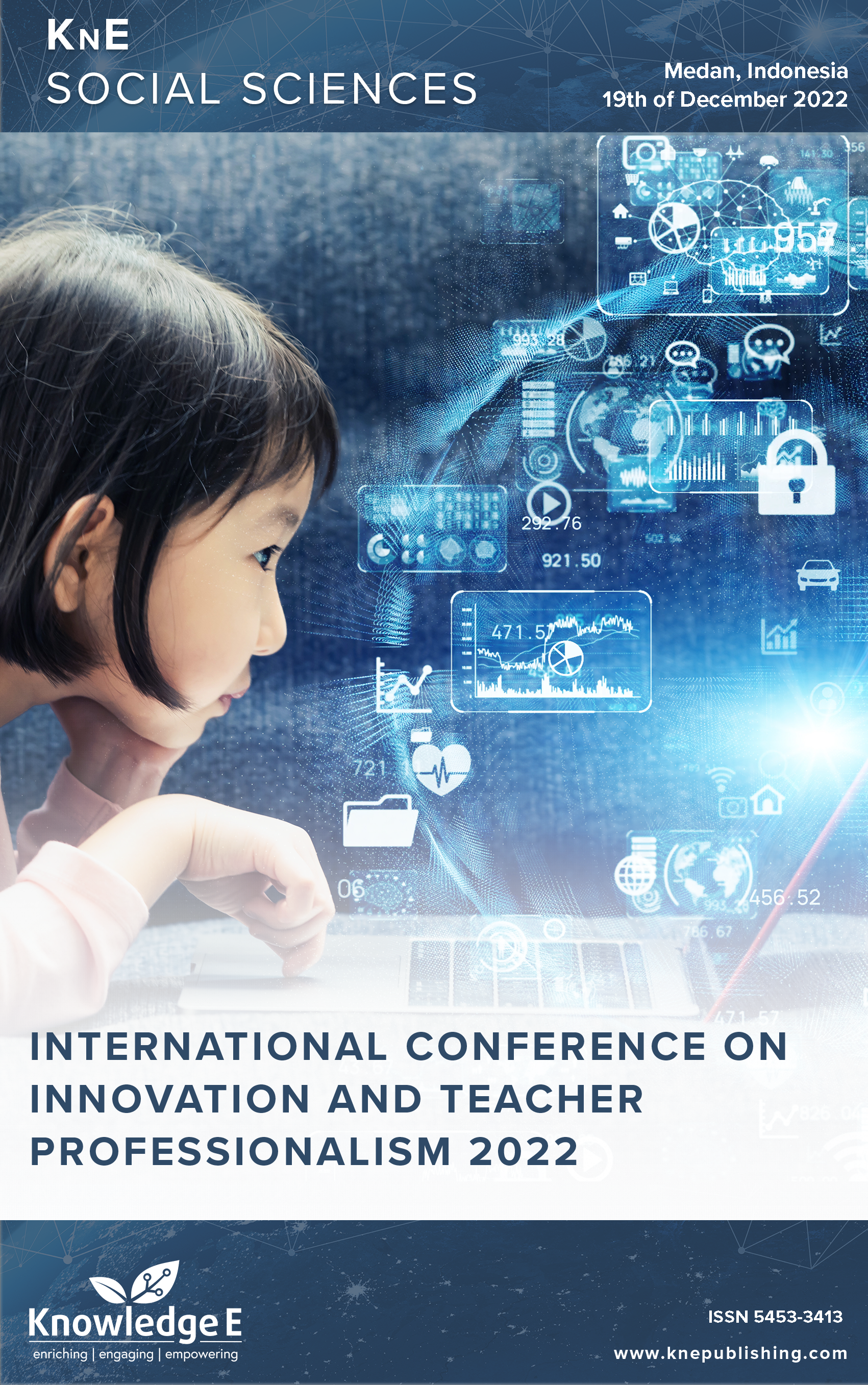Need Analysis of Innovative Media Development Based on Local History of the Agung Temple in South Kalimantan
DOI:
https://doi.org/10.18502/kss.v8i10.13433Abstract
This article aims to analyze the current needs of history learning since the introduction of the Independent Curriculum. Some of the latest needs that researchers get include, the renewal of materials and learning media. Following up on some of these needs, researchers present alternative solutions for history learning media with various appropriate technologies. Some of the appropriate technologies in question include 3D objects, 360 virtual media, augmented reality, and e-Books (OMAE). In the process of making and implementing it as an alternative solution, OMAE products are presented with content based on local history that is not Javacentric, namely the Agung Temple in South Kalimantan. In order to facilitate researchers in achieving these goals, qualitative research methods with an intrinsic case study approach was used as a basis for this research. The results obtained form this method, shows that OMAE products can be declared effective along with many benefits. In addition, with the presence of local history-based material content that is not Javacentric, it can make students wiser and able to maintain the harmonization of national and state life.
Keywords: learning media, innovation, independent curriculum, Agung Temple
References
[2] Amalia M, Sapto A, Nafi’ah U. “aplikasi Journey Guerilla Of Revolution ( Jaguar) sebagai inovasi media pembelajaran sejarah berbasis Unity.” J Pendidik Sej Indones. 2022;5(1):87–99.
[3] Widja GI. “Pembelajaran sejarah yang mencerdaskan suatu alternatif menghadapi tantangan dan tuntutan jaman yang berubah.” J Pendidik Sej Indones. 2018;1(2):117– 134.
[4] Azhari I. “Sejarah lokal Jawa dijadikan sejarah nasional: Mengkritisi Jakartasentrisme pembelajaran sejarah Indonesia.” in Prosiding Seminar Nasional & Kongres (1 ed., Vol. 1, hlm. 39–46). https://www.researchgate.net/profile/Nuraedah- Nuraedah/publication/34696425, 2017, pp. 39–46.
[5] Handarini IO, Wulandari SS. “Pembelajaran daring sebagai upaya Study From Home (SFH) selama pandemi Covid 19.” J Pendidik Adm Perkantoran. 2020;8(3):496–503.
[6] Ayundasari L. “Implementasi pendekatan multidimensional dalam pembelajaran sejarah Kurikulum Merdeka.” Sej dan Budaya J Sejarah, Budaya, dan Pengajarannya. 2022;16(1):225–234.
[7] Tanjung PAM, Sitompul SO. “‘Kian Santang’ game as historical educational media using digital storytelling concept.” Educ Inf Technol. 2020;25(6):5379–5388.
[8] Winahyu EAR, Djono D. “The media literacy in the 21st century: The role of teacher in historical learning.” Int J Multicult Multireligious Underst. 2018;5(4):363–369.
[9] Azhar MWH, Asraf HMS, Idrus SZS. “Augmented reality to elevate the Chenta Kopi.” J Phys: Conf Series. 2020;1529(2):22095.
[10] Kusmartono RPV, Widianto H. “Ekskavasi situs Candi Agung, Kabupaten Hulu Sungai Utara.” Ber Penelit Arkeol. 1998(02).
[11] Abidin FN. “Pembelajaran sejarah lokal di sekolah pedesaan dan vokasi.” J Pendidik Sej Indones. 2020;3(1):88.
[12] Muhammad B, Sumargono S. “The influence of digital learning media towards students’ Historical Learning Interests.” Int J Multicult Multireligious Underst. 2021;8(4):557–561.
[13] Selim G, Jamhawi M, Holland A, Ma’bdeh S. “Digitizing heritage as an integrated sustainable tool for informative interpretation of the past: The case of Umm Qais, Jordan,” Tradit. Dwellings Settlements Rev. 2021.
[14] Putra EMV, Prasetyo AN, Arifa BA. “Penerapan teknologi video 360 derajat berbasis virtual reality menggunakan Google Cardboard Sebagai media alternatif pengenalan kampus Institut Teknologi Telkom Purwokerto.” INISTA J Informatics Inf Syst Softw Eng Appl. 2021;4(1):22–30.
[15] Geelan B, de Salas K, Lewis I, King C, Edwards D, O’Mara A. “Improving learning experiences through gamification: A case study.” Aust Educ Comput. 2015;30(1).
[16] Simanjuntak BM, Suseno M, Setiadi S. “The effectiveness of Microsoft Office 365 as an online english learning media.” in UICELL Conference Proceeding; 2022, pp. 25–32.
[17] Hariyono H. “Sejarah lokal: Mengenal yang dekat, memperluas wawasan.” Sej dan Budaya J Sejarah Budaya dan Pengajarannya. 2017;11(2):160–166.
[18] Ridhoi R. “Tema baru historiografi bagi pembelajaran sejarah tingkat SMA/SMK di Jawa Timur.” Abad J Sej. 2019;3(1):18–29.
[19] Hariyono H. “Pendidikan sejarah dan karakter bangsa sebuah pengantar dialog.” J Pendidik Sej Indones. 2018;1(1):1–22.
[20] Muhammad A, Sugiyanto WA, Faturohman. “HiFi (History Fun Learning): Historical learning media to improve the knowledge of Indonesian heroes based on construct for elementary school students in Yogyakarta. The 2nd International Conference on Informatics for Development. https://www.researchgate,” in The 2nd International Conference on Informatics for Development, 2018.
[21] Juliya M, Herlambang TY. “Analisis problematika pembelajaran daring dan pengaruhnya terhadap motivasi belajar siswa.” Genta mulia J Ilm Pendidik. 2021;12(1):281–294.
[22] Efendi YM, Lutfi I, Utami PWI, Jati PSS. “Pengembangan media pembelajaran sejarah Augmented Reality Card (arc) Candi–Candi masa Singhasari berbasis Unity3D pada pokok materi peninggalan Kerajaan Singhasari untuk peserta didik kelas X KPR1 SMK Negeri 11 Malang.” J Pendidik Sej Indones. 2018;1(2):176–187.
[23] Hoon NL, Shaharuddin SS. “Learning effectiveness of 3D hologram animation on primary school learners.” J Vis Art Des. 2019;11(2):93–104.
[24] Prasetiyo KT, Setyosari P, Sihkabuden S. “Pengembangan media augmented reality untuk program keahlian teknik gambar bangunan di sekolah menengah kejuruan.” JINOTEP ( Jurnal Inov Dan Teknol Pembelajaran) Kaji Dan Ris Dalam Teknol Pembelajaran. 2018;4(1):37–46.
[25] Muslih M. “Aplikasi mengenal candi pada pelajaran sejarah untuk Sekolah Dasar Kelas IV dengan Virtual Reality.” ANDHARUPA J Desain Komun Vis Multimed. 2020;6(02):204–214.
[26] Widodo AS. “Selection of learning media mathematics for junior school students.” Turkish Online J Educ Technol. 2018;17(1):154–160.

